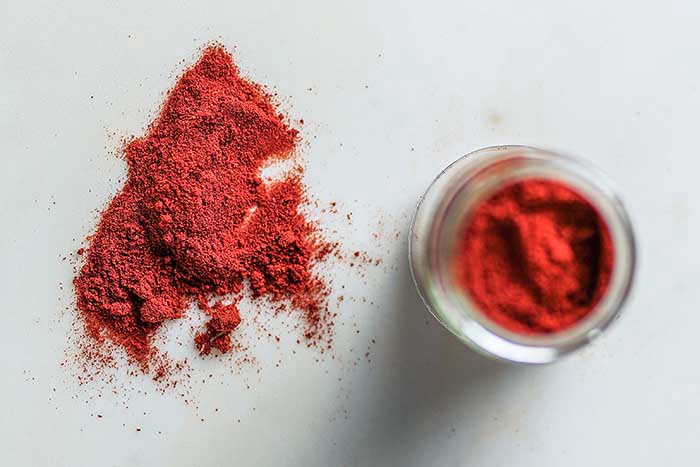Got a baking or dip recipe that calls for soft cream cheese? There’s no need to heat it. Keep it cold and fresh with these four easy ways to soften cream cheese.

Fresh cream cheese is a key component of so many recipes. Whether it’s jalapeno popper recipes, soup toppings, grilled cheese sandwiches, it’s the unsung hero of so many dishes.
A lot of recipes call for softened cream cheese, which is no problem if you have a microwave. But if you’re using it for icing, a party dip, or a simple bagel spread you’ll want it to stay cold.
We’ve got you covered. These four quick and easy methods will get you the cream cheese consistency you need.

The Cube Method
The first method we will take a look at is the cube method. It involves cutting a block of cheese into smaller cubes, as much as you will need for your serving. Also, cutting the block into smaller cubes makes it easier to soften. You want to work with smaller pieces, and this way, you are assured of a more consistent and smoother texture. Try to make the cubes as uniform in size as possible.
Then lay the cubes out on a plate or tray, making sure that the cubes don’t touch. If you want a relatively soft cheese, you can leave it out for about 45 minutes to an hour at room temperature. The cubes will start to soften. You just need to keep checking on them because cream cheese will not always need an hour to soften up. The amount of time that it will take will largely depend on how warm the room is. Just make sure that you are not keeping the cheese out in the sun.
Cream cheese has significant fat content, so leaving it out at room temperature on a warm day is a great way to thaw out gradually. The small cubes mean a large surface area of the cubes exposed, allowing more of it to soften uniformly. But it may not be the best option if you are in a hurry and don’t have the hour to spare.
Warm Water Bath
The next method that we will look at is the warm water bath. It will take a lot less time than thawing it out at room temperature. It will take almost 15 minutes. It’s also a great alternative, especially for those who don’t want to overheat the cheese in a microwave. Warm water will soften the cheese slowly and steadily.
To use this method, the first thing that you want to do is to make sure that the cheese is in puncture-free packaging. If there are holes, there’s a possibility that water may seep through this hole in the bag and ruin the cheese. Then pour some warm water inside a bowl. Flip the cheese packet over every 5 minutes or so to get every side soaked in the warmth of the water.
Allow the cheese to sit in the warm water. After about 10minutes, you should start to notice it go soft. Flipping it periodically will also give you a chance to feel how soft the cheese is and if it’s at a stage to use it. Gently apply pressure on the wrapper. As soon as you think it is gentle enough for your recipe, you may remove it from the bowl.
Microwave
The microwave is often the first method that most people rush for. This is primarily because it is easy and also convenient. The main selling point here is that it is fast as well. To soften cream cheese in the microwave, start by removing the amount you will need from the refrigerator. Then unwrap it, making sure there is no foil remaining or any part of the packaging that would not only impede the process but be dangerous to put in the microwave as well.
Put the portion of cream in a microwave-safe dish, then turn the microwave on high and heat the cheese for 15 seconds. When the timer goes off, open and check on the texture of the cheese, you can do this by poking the center part of the cheese with a skewer or toothpick, something that won’t cause too much damage. If the cheese is still not soft enough, you can put it back in the microwave longer. For this, you can use 10 seconds at a time.
Since you will set it on high, you must constantly check on the cheese to ensure that it doesn’t overheat and end up being useless for what you want to use it for. Once it fully melts, none of the king’s horses or men will be able to put it back together again. You would rather have it being slightly harder than you anticipated than too soft and gooey. When you press down on the cheese, it should be soft enough such that you should be able to see your fingerprint.
Countertop
This method is similar to the cube method in that they both use room temperature as the primary agent of change. The main difference is that this method does not call for the cheese to be cut into smaller cubes. Using the countertop method should take you about 30 minutes for the cheese to be soft enough to use in your recipe.
Before you start using the countertop, wipe it down and make sure it’s with this method, you will still need to portion the cheese into smaller bits. This way, you get the cheese’ temperature to room temperature gradually enough. Spread the portions of cheese evenly across the countertop. Allow it to sit, periodically checking, by down lightly on it to see if it is soft enough. While this may feel like watching paint dry, don’t be tempted to use a countertop close to the sun. Also, be sure to use the cheese as soon as it is soft enough.

How to Soften Cream Cheese
Equipment
- microwave-safe bowl
- 1 ziplock bag
Ingredients
- cream cheese
Instructions
Warm Water Bath
- Place cream cheese in ziplock bag and seal tightly
- Pour warm water into a large mixing bowl
- Place sealed cream cheese in warm water bath. Leave for 10 minutes, or until soft.
- Remove and serve immediately
Microwave
- Place cream cheese in a microwave-safe dish. Heat in microwave on high heat for 15 seconds.
- Check the texture of cheese, and use a toothpick to check internal consistency
- Heat for 10 more seconds if needed, or serve immediately
Cube Method
- Slice firm cream cheese into 1-inch cubes
- Lay cubes on a tray, leaving ½ inch space between each cube
- Leave out at room temperature until softened, about 45 minutes
FAQ
How long can cream cheese sit out?
Cream cheese can sit out on the counter and at room temperature for 2 hours. If you want to push it, you can go as far as four hours, but no longer than that.
Can you freeze cream cheese?
Yes, you can, as long as it’s kept either in its original packaging or in an airtight container or packet. It can be kept in the freezer for about two months.
Can I leave the cream cheese out overnight to soften?
It’s not advisable as it will quickly go bad after a few hours.



